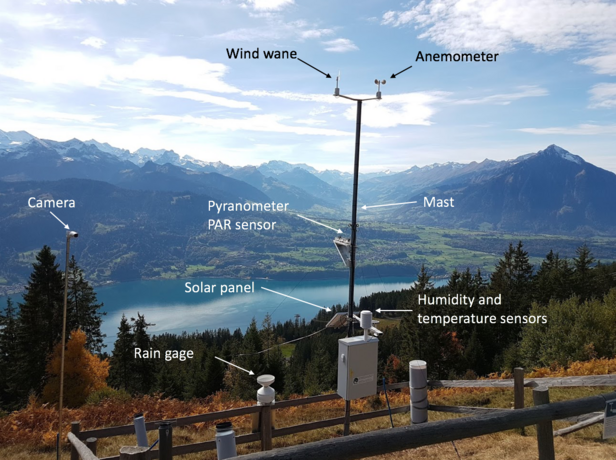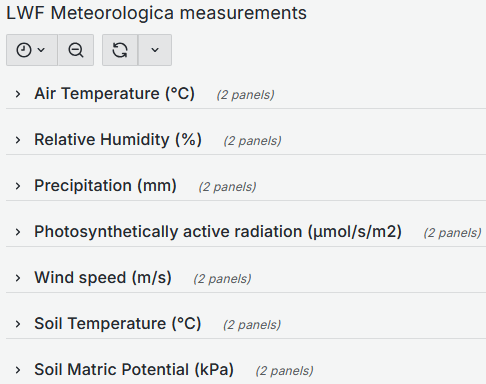Meteorological data are essential for understanding ecological processes and interactions within forest ecosystems. Each LWF site is typically equipped with two weather stations: one located under the forest canopy and another in an adjacent open field. Measurements are recorded at a 10-minute temporal resolution and are automatically transmitted to the central LWF database (see LWF database (51)).
These high-resolution data enable the assessment of how local forest structure influences climatic conditions within the stand. Moreover, they provide valuable in-situ reference data for a wide range of research projects based on LWF observations.
The LWF program continuously records the key meteorological parameters:
- air temperature
- relative humidity
- precipitation
- global radiation
- photosynthetically active radiation (PAR)
- wind speed
- wind direction

Live data ¶

Current measured values from stations in and outside the forest (stand and open land) are shown under the following link: